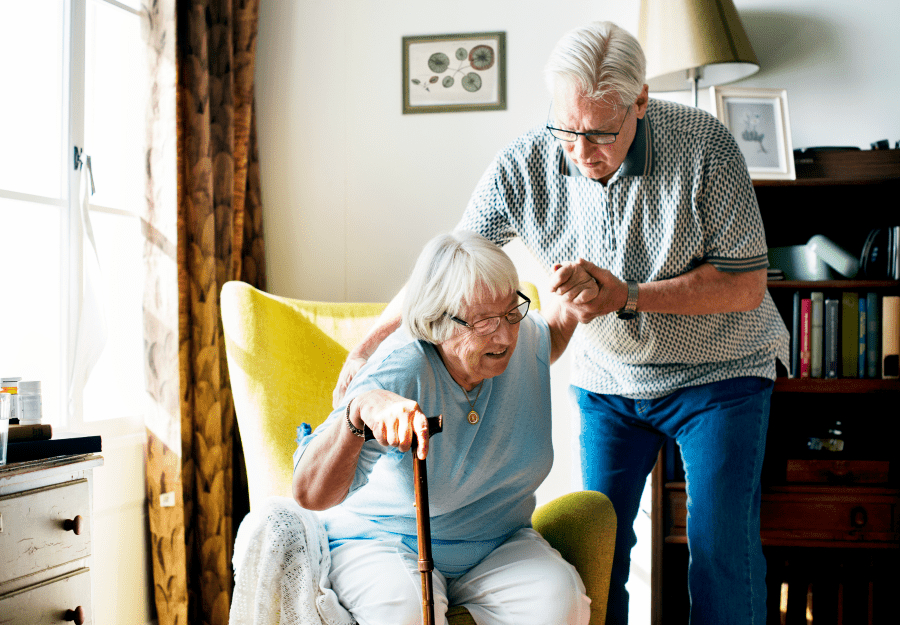Creating a comfortable and secure environment for our aging loved ones is of utmost importance. As we age, our needs change, and so does the functionality of our living spaces. One of the most effective ways to ensure safety and comfort is through decluttering tips for elderly homes. By implementing these strategies, we can help our seniors live independently and confidently in their own homes.
In this article, we will explore various decluttering tips for elderly homes that can make a significant difference in the lives of our elderly family members. From simple organization techniques to more comprehensive approaches, these tips are designed to create a safer and more enjoyable living space.

Understanding the Need for Decluttering
As our loved ones age, their mobility and cognitive abilities may decline, making it essential to simplify their living environment. A cluttered home can pose safety risks, such as tripping hazards and difficulties in locating essential items. By reducing clutter, we not only improve safety but also enhance the overall quality of life.
The Psychological Benefits of a Clutter-Free Space
A clutter-free home isn’t just safer; it also has psychological benefits. A tidy and organized space can reduce stress and anxiety, promote a sense of control, and even improve mood and mental clarity. For seniors, these benefits are crucial in maintaining a positive outlook on life.
Start with a Plan
Before diving into the decluttering process, it’s essential to have a plan. Assess the needs and preferences of your loved one, and prioritize areas that require immediate attention. Consider enlisting the help of other family members or hiring professional organizers who specialize in decluttering tips for elderly homes.
Identify Problem Areas
Begin by identifying areas of the home that are most cluttered or pose the greatest safety risks. Common problem areas include the living room, kitchen, bathroom, and bedroom. Focus on these spaces first to make an immediate impact.
Practical Decluttering Tips
1. Simplify the Living Room
The living room is often the central hub of the home, making it a priority for decluttering. Remove unnecessary furniture and items that obstruct pathways. Ensure that essential items, such as remote controls and reading glasses, are easily accessible.
2. Kitchen Organization
The kitchen can quickly become cluttered with gadgets and utensils. Encourage your loved one to keep only the items they use regularly. Consider installing pull-out shelves or organizers to maximize cabinet space and make items easier to reach.
3. Bathroom Safety
The bathroom is a high-risk area for falls. Remove any unnecessary items from countertops and shelves to create a clean and open space. Install grab bars and non-slip mats to enhance safety. For more information on shower chairs, visit our detailed guide.
4. Bedroom Comfort
In the bedroom, ensure that pathways to the bed and other essential areas are clear. Encourage your loved one to donate or discard clothing and items they no longer use. Consider adding additional storage solutions, such as under-bed organizers, to keep the room tidy.
Embrace Technology
Technology can be a valuable ally in maintaining a clutter-free and safe home. Consider using smart home devices to simplify daily tasks and enhance safety. For instance, voice-activated assistants can help seniors control lighting, thermostats, and even make emergency calls without needing to navigate a cluttered space.
Fall Detection Systems
Installing fall detection systems can provide peace of mind for both seniors and their caregivers. These systems are designed to alert family members or emergency services in the event of a fall. Learn more about fall detection systems and how they can enhance safety.
Maintain and Adjust
Decluttering is not a one-time task; it requires ongoing maintenance. Encourage your loved one to regularly assess their space and make adjustments as needed. This proactive approach ensures that their home remains safe and comfortable over time.
Regular Check-Ins
Schedule regular check-ins with your loved one to discuss their living environment and any challenges they may be facing. This open communication allows for timely interventions and adjustments.

FAQs
1. How often should we declutter an elderly person’s home?
It’s recommended to conduct a thorough decluttering session at least twice a year, with regular maintenance in between to address any new clutter that may accumulate.
2. Are there professionals who can assist with decluttering for seniors?
Yes, many professional organizers specialize in working with seniors and can provide valuable assistance and guidance throughout the decluttering process.
3. What are some key safety features to consider when decluttering?
Focus on clear pathways, adequate lighting, and accessibility. Consider installing grab bars, non-slip mats, and fall detection systems to enhance overall safety.
By implementing these decluttering tips for elderly homes, you can create a safer, more comfortable, and enjoyable living environment for your aging loved ones. For more information on designing safe living spaces, visit the article on safe living spaces.
This article contains affiliate links. We may earn a commission at no extra cost to you.






